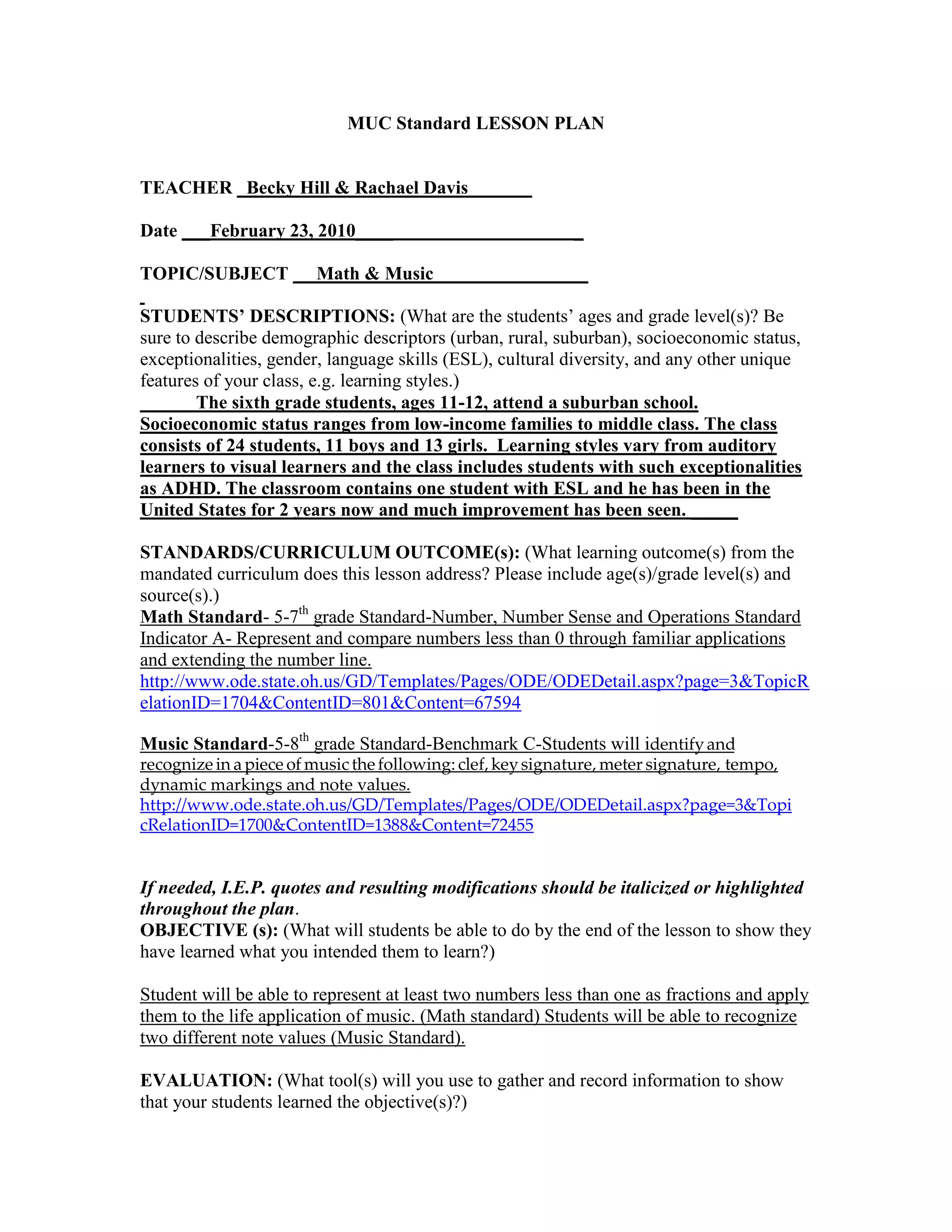This lesson plan aims to teach 6th grade students about fractions and music. Students will learn about fractions less than one and recognize different note values. They will be evaluated through clicker questions during class and participation in games. The lesson uses a SMART board for an interactive math lecture on fractions and note recognition. Students will then split into groups to play math and music games on the board and Wii. The plan incorporates diversity by allowing different musical tastes and addressing multiple intelligences. Technology like the SMART board and Wii engages students in an interactive lesson.



